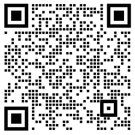Application analysis of UV LED in the field of optical communication
In terms of communication, the speed of ultraviolet light communication is far lower than that of visible light communication, but as invisible light, ultraviolet light has the unique advantages of low resolution, low eavesdropping rate, and high confidentiality. ①Low resolution: Ultraviolet light is invisible light, and it is difficult for the naked eye to find the existence of ultraviolet light source; ultraviolet light spreads signals in all directions through atmospheric scattering, so it is difficult to judge the location of the ultraviolet light source from the scattered signal. ②Low eavesdropping rate: Due to the strong absorption of atmospheric molecules and suspended particles, the intensity of ultraviolet light signals attenuates exponentially. This attenuation is a function of distance. Therefore, the transmission power of the system can be adjusted according to the requirements of the communication distance to make Its radiated power in non-communication areas is minimized and is difficult to intercept.
As a new type of military communication system, ultraviolet light communication has the advantages of strong anti-interference ability, good confidentiality, non-line-of-sight communication and omni-directional communication, and has become the focus of research by military technicians at home and abroad. However, conventional ultraviolet light sources (low-pressure mercury lamps) have defects such as large volume, short life, low modulation rate, and fragility, which limit the development of ultraviolet communication.
In order to solve the problem of ultraviolet light communication light source, the Defense Advanced Research Projects Agency (DARPA) launched a project to develop a variable wavelength transistor ultraviolet light emitter in 2002, and successfully developed a 274nm wavelength. Blind area ultraviolet light emitting diode (UVED). Compared with low-pressure mercury lamps, UV LEDs have the advantages of small size, long life, low-voltage power supply, and digital modulation.
The excellent characteristics of UV LED make it applied to the field of UV communication once it is published. In 2005, MIT used the 274nm ultraviolet LED manufactured by DARPA as the light source to develop a set of experimental prototypes of ultraviolet communication. The communication rate is 200b/s within a range of 100m; Ben Gurion University, Israel , British Aerospace Systems, University of California, and other scientific research units have also established UV communication systems based on UV LEDs. However, the specific circumstances and technical details of their research work are in a state of high confidentiality.

